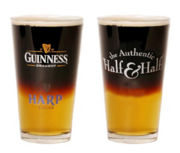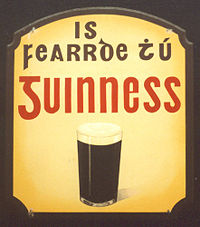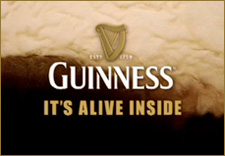Peak Organic Brewing, a small organic brewing company located in Portland, ME, has collaborated with local farmers and like-minded small businesses to create a delicious Maple Oat Ale. The Maple Oat Ale marks Peak’s first seasonal brew. “Peak Organic beers were created as a toast to life’s peak experiences. Whether it’s a spectacular afternoon in the outdoors, a good time with friends and family, or a great day on the job – Peak Organic Brewing hopes you have the opportunity to celebrate the peak experiences of your life.”

The Maple Oat Ale is brewed with Maine-grown organic oats from granola company GrandyOats and Vermont-produced organic maple syrup from Butternut Mountain Farms in Morrisville, Vermont. The beer is in support of Chefs Collaborative, the nation’s leading culinary organization that provides its members with tools for running economically healthy, sustainable food service businesses.
They started working on the recipe last fall and bottled the first production batch in the last week of February. The equivalent of 48,000, 12-ounce bottles have been distributed in stores in Maine, New Hampshire, Massachusetts, Vermont, Connecticut, New York and New Jersey.

The following is an excerpt written by a columnist for the Portland Press Herald – Maine Sunday Telegram:
And on a global level, it’s a case of how even small companies can look at their own practices and attempt to make progress on global problems, according to John Cadoux, Peak’s founder.
Cadoux said while consumers are often passionate about buying local brews, the ingredients in those beverages often have to be sourced globally. When Peak started to look at its supply chain, it realized it was creating a huge carbon footprint as it shipped in organic ingredients from around the world.
So Peak looked at its recipes to find organics ingredients it could get within 150 miles. When the company was first formed in 2006, its represenatives met with some other local companies that were working on environmental sustainability, including GrandyOats.
As the company started thinking more about its footprint, Cadoux said, it decided to go with a seasonal that would use local ingredients. The result was the maple oat.
The brew has used 1,250 pounds of Maine oats to date.
Things The Wench loves:
Beer – particularly ales (check)
100% pure all-natural Vermont Maple Syrup (check)
Oats – especially oatmeal cookies (check)
Organic, green and sustainable products (check)
Conscientious Breweries seeking to reduce carbon footprint (check)
Peak Brewing Company’s Maple Oat Ale sounds like an absolute dream. Unfortunately, it is not yet offered in Ohio. In the spirit of the company’s dedication to sustainability and reducing carbon footprint, it would only be appropriate for me to travel to the Brewery to enjoy this ale. (Although my traveling probably has a greater carbon impact than having it shipped here.) Lucky for me, my best friend from high school currently resides with her new husband in Portland, ME. Whether I visit her or have her ship it here, I will taste this beer!!! And that is a promise!!!

About Peak Organic Brewing Company
We are a small brewing company dedicated to making delicious beer using the world’s best ingredients. We believe that using barley and hops that are grown without toxic and persistent pesticides and chemical fertilizers makes our beer tastier and more enjoyable, both for you and for the planet.
The ingredients in our delicious beers are made without toxic and persistent pesticides and chemical fertilizers. These substances can cause soil degradation and chemical runoff that contaminates water sources and, hence, the ecosystems that they support.
We think that healthier soil grows tastier barley and hops. By supporting organic agriculture, we believe that we can make the most delicious beer possible and feel good about the positive environmental contribution we are making.

About Chefs Collaborative
Founded in 1993, Chefs Collaborative is the leading culinary organization that provides its members with tools for running economically healthy, sustainable food service businesses.
Chefs Collaborative works with chefs and the greater food community to celebrate local foods and foster a more sustainable food supply. The Collaborative inspires action by translating information about our food into tools for making knowledgeable purchasing decisions. Through these actions, our members embrace seasonality, preserve diversity and traditional practices, and support local economies.

About Grandy Oats
Beneath the foothills of New England’s White Mountains, in a one hundred-year-old restored dairy barn, we make all of our bulk and packaged granolas, roasted nuts, and trail mixes by hand, in small batches, and using only the finest organic ingredients.
GrandyOats has been making granola here in Maine since 1979. While we have grown tremendously since our inception, nothing about the soul of the company has changed. We are still a family of friends committed to quality living and environmentally and socially friendly, sustainable business practices.

About Butternut Mountain Farms
Butternut Mountain Farm has been producing and packaging pure maple syrup for over 30 years. Our attention to quality and detail, our service and our size, have gained us recognition as one of the leading companies in the maple industry. Maple syrup in all sizes, granulated maple sugar, maple sugar candies, maple mustards, maple barbecue sauce, pancake mixes, maple butter, maple popcorn, maple pepper, liquid and crystallized honey and other related products.
Read Full Post »





























